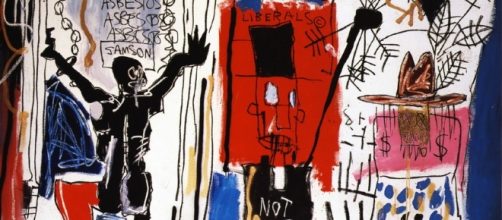It is the message on the streets that hides in plain sight in the underbellies of cities all over the world. street art in the past had been shunned, criminalised and feared.
Street Art: The Political Motivator
It is another medium of visual culture where artists communicate with the general public and make known the invisible issues of ideology and speak up against the inequalities the everyday masses face.
Beirut; the breeding place of contradiction has given birth to a swarm of small images deposited throughout the city; its population’s response to the war and conflict with Israel that has torn their home apart.
It has made known their struggles, to the many travellers that pass through and observe the murals decorating the city’s streets.
Many streets artists will display their work in the highest, loudest and most obvious places they can find to ensure their work is having maximum effect and reaching the largest possible audience. Often location is part of the challenge for the artists, as they compete with other to find the best spaces to display their work.
Globally, street art has been used as a medium of inequality to capture issues relevant to our contemporary society, such as stability, monopolization of state and is the voice of the minority speaking out against racism, sexism and homophobia.
In Medellin, Columbia Street Art has become a cohesive part of their lifestyle. Triggered by the death of graffiti artist Diego Felipe Becerra in 2011, who was killed in the San Javier underpass whilst spray painting his signature ‘Felix the Cat’ by police. The public outrage that followed has changed the community’s view of Street Art and they legalised that people could decorate certain walls in the city.
Many of the images are the artists’ own statements in response to the act that took place and seemingly, following the events of 2014 and the cases of police brutality that have come to light after the death of Michael Brown; and our re-evaluation that racism never truly disappears, it would seem these messages are still prevalent.
Street Art has also been used in the past as a great weapon promoting awareness of sexism. In a world that has normalised rape culture and objectification of women and that have become unaware of the equalities of gender that still exist, Street Art is the reminder to all of us, that it is still very much alive and that we need to still be fighting.
Taking to the streets and the city walls
Its hopes as an industry are to make the individual artist’s message become one of the people by placing controversial artwork within the public domain.
Street Art is not a practice limited to only one corner of the world. It is a community that exploded from mid-60’s Philadelphia and blasted into every city all across the globe.
It became the weapon of a creative youth and a speakerphone of the ignored.
Street Art is important because it allows people to create their own platform to speak from, as they wouldn’t get it any other way. By putting their work in as many places as possible they demand to be heard and noticed.
Unfortunately many associate negative stereotypes to street art, instead seeing it not as a form of creativity but a criminal act of vandalism. In reality this view comes from those who may not fully understand the aesthetic and practice of the medium, but also the authorities that have deemed it socially unacceptable. Many people use art and Graff as a way of commenting on different issues, but the negative view many people have of it is simply that the canvas has become the city they are trying to comment on.

